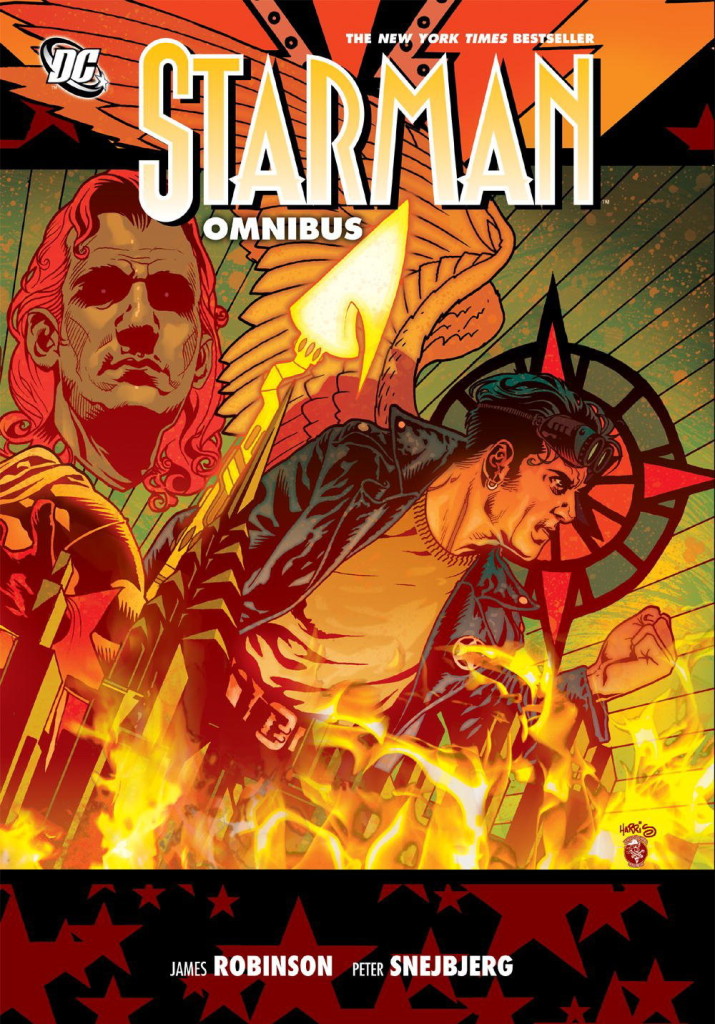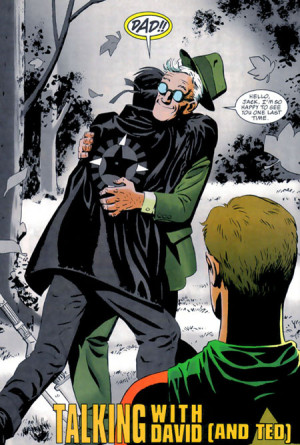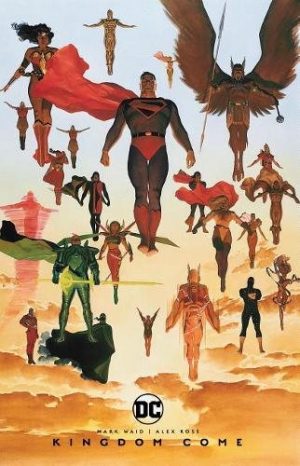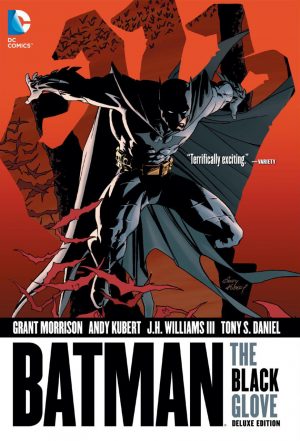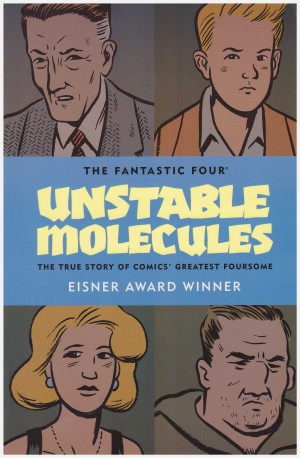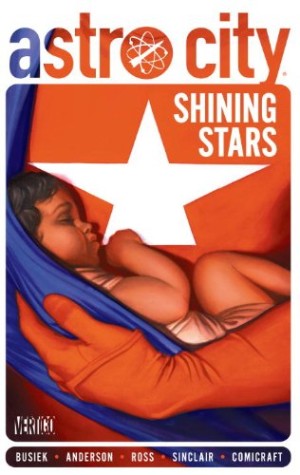Review by Frank Plowright
Since the 1960s the rule of thumb defining continuity elements of superhero comics has been what Stan Lee referred to as “the illusion of change”. Superheroes are prodded from conflict to crisis and back, while the soap opera moments of their personal lives provide additional drama. Usually, though, ten, twenty or fifty issues later a superhero is largely in the same place. It’s an exceptionally rare superhero title that messes with this formula, but as we reach the final volume it’s apparent that Starman has been exactly that, and moreover intended as such from the start.
Over these six books Jack Knight has transformed from a self-obsessed collector, marginally disappointing son and extremely reluctant hero into the proud standard bearer of tradition, with concern about others and his wider environment. These characteristics were always present, if buried deep, and James Robinson presented the ideal circumstances for them to emerge. By the end of this book Jack is very different person from the guy we first saw in volume one.
Unlike the preceding collections there’s little content not already presented in the Starman paperbacks. In fact the sole extra story, involving David Knight and the Shade, dates from several years after the series concluded and ties in with Blackest Night. It’s functional, but nothing more.
On the other hand when you’ve got material as good as what was previously issued as Grand Guignol, no extras are required. This thirteen part thriller involves almost everyone who’s played a significant role in even a single chapter of the series and survived. We learn how Opal City was built, how it progressed, and witness its near-destruction at the hands of criminals seemingly gathered at the Shade’s behest. The Shade, to this point, has been presented as a charming, but morally ambivalent character who may commit crimes elsewhere to amuse himself, but to whom Opal City is both sanctuary and home, and towards which he’s extremely protective.
It’s an astonishing page-turning tale that unfolds slowly, taking the time to drop back into the past on several occasions, not least to display the machinations of the saga’s villain. Jack Knight is sidelined for much of it, although Robinson has built his cast so compellingly, this is barely noticed. There’s mystery, tragedy, heroism and villainy, and not a page wasted.
Peter Snejbjerg draws almost this entire book, and his confident draughtsmanship is, in places, stunning, and never slips to merely average. The occasional anatomical weakness is far outweighed by his unstintingly excellent storytelling and constant attention to detail. He doesn’t illustrate the Blackest Night chapter, but that has the appealing combination of Bill Sienkiewicz scratching over Fernando Dagnino’s layouts.
The final lengthy sequence was originally published in paperback as Sons of the Father. It answers the mystery of the Starman operating only during 1951, offering a neat twist, new insight into both Jack and his father Ted Knight, and the chance to work with another hero of the era. The remainder is valedictory as we take a final look at Opal City’s most prominent residents, and Jack reaches a decision.
He’s not been seen since, and long may it stay that way. What needed to be said was said, and apart from a brief appearance in JSA, Jack’s growth was contained pretty well within this series. Robinson did return to some of the cast. Mikaal Tomas as Starman featured during his Justice League run, and there’s a solo Shade graphic novel.
